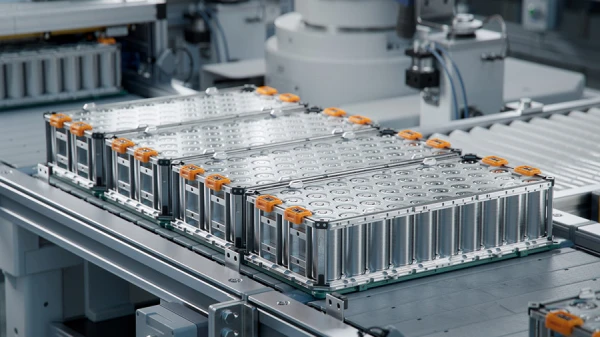Whether it is the design of the battery pack or the use of lithium batteries in digital devices, buying a best lithium battery is crucial. So, what kind of lithium battery is a good battery?
1. Long cycle life
The life of rechargeable lithium batteries includes two indicators: cycle life and calendar life.
Cycle life means that after the battery has experienced the number of cycles the lithium battery manufacturer promises, the remaining capacity is still greater than or equal to 80%.
Calendar life means that regardless of whether it is used, its remaining capacity shall not be less than 80% within the period the manufacturer promises.
Battery cycle life is one of the key indicators of power batteries. On the one hand, the big act of replacing the battery is troublesome, and the user experience is not good. On the other hand, battery life is also a cost issue.
The concept is “full life cycle cost of electricity.” The total power of the power battery multiplied by the number of cycles is the total amount of power that can be utilized throughout the battery’s life cycle. Divide the total price of the battery pack by this sum to get the price per kilowatt-hour of electricity over the entire life cycle.
The battery prices we usually talk about, such as 1,500 RMB/kWh, are only priced based on the total energy of the new battery cells. The full life cycle cost of electricity is the direct benefit of end customers.
The most intuitive result is buying two battery packs with the same capacity at the same price. It reaches the end of its life after charging and discharging 50 times. The other can be used again after being charged and discharged 100 times. Of these two battery packs, it’s clear which is cheaper and which is more expensive.
2. Low cost
The price per kilowatt hour of lithium battery is low, which is the most intuitive cost. In addition to what was said earlier, whether the cost is really low for users depends on the “full life cycle cost of electricity.”
In addition to the above two costs, battery maintenance costs must also be considered. The maintenance of the battery cells themselves mainly refers to manual balancing.
The built-in balancing function of the lithium battery BMS is limited by the size of its designed balancing current. It may not be able to achieve the ideal balance between cells. Over time, the problem of excessive pressure difference will occur in the lithium battery pack. In such a situation, you have to perform manual equalization and charge the cells separately with too low voltages. The less frequently this occurs, the lower the maintenance costs.
3. High energy density/high power density
Energy density refers to the energy contained in unit weight or unit volume.
Power density refers to the value of the maximum discharge power corresponding to unit weight or volume.
However, there is a certain contradictory relationship between energy density and safety. As energy density increases, security will always face newer and more difficult challenges.
4. High Coulomb efficiency
The ratio of the energy released during the discharge process of a lithium battery to the energy charged into the battery from 0 before this discharge is called Coulombic efficiency.
The efficiency is mainly related to the internal resistance of the battery.
Compared with other types of rechargeable batteries, the charge and discharge efficiency of lithium batteries is relatively high, generally above 98%. Therefore, this parameter is often not mentioned much.
5. High voltage
Because the negative electrode materials of lithium batteries use graphite electrodes. The material properties of the cathode material mainly determine the voltage of a lithium battery. The upper voltage limit of lithium iron phosphate battery is 3.6V. The maximum voltage of ternary lithium and lithium manganate batteries is about 4.2V.
Developing high-voltage batteries is a technical route for improving the energy density of lithium batteries. To increase the output voltage of the cell, a cathode material with a high potential is required. Anode material with low potential and electrolyte with high stable voltage.
6. Good high-temperature performance
Lithium batteries have good high-temperature performance, which means that the battery’s positive and negative electrode materials, separators, and electrolytes can maintain stability when the battery core is in a higher-temperature environment. Lithium battery packs can work normally at high temperatures, and their lifespan will not accelerate. High temperatures are less likely to cause thermal runaway accidents.
The safety risks of lithium batteries largely come from high temperatures. Generally, the maximum operating temperature of lithium batteries is around 50°C. In particular, it can reach 60℃.
The SEI film on the surface of the negative electrode can begin to dissolve at around 90°C. This causes the battery core to enter the self-heating stage. Self-generated heat brings additional temperature rise; if not stopped in time, there will be a risk of thermal runaway.
7. Good low-temperature performance
Lithium batteries have good low-temperature performance, which means that the lithium ions and electrode materials inside the battery maintain high activity at low temperatures. And the remaining capacity is high. The discharge capacity decreases. It also allows for large charging rates.
As the temperature drops, the remaining capacity of lithium batteries decays at an accelerated rate. The lower the temperature, the faster the capacity decays. Forced charging at low temperatures is extremely harmful and can cause thermal runaway accidents.
At low temperatures, the activity of lithium ions and electrode active materials decreases, and the rate of lithium-ion embedding into the anode material seriously decreases. When an external power supply is used to charge the battery at a power exceeding the battery’s allowable power, many lithium ions accumulate around the negative electrode. The lithium ions that have no time to embed in the electrode receive electrons and are directly deposited on the surface of the electrode to form lithium elemental crystals. The dendrites grow, directly penetrate the separator, and pierce the positive electrode. This causes a short circuit between the positive and negative poles, leading to thermal runaway. Lithium elements are active in nature and can react violently at around 180°C. It is undoubtedly a booster for thermal runaway.
8. Good consistency
Consistency means that cells used in the same battery pack have very small differences in parameters such as capacity, open circuit voltage, internal resistance, and self-discharge and have similar performance. Suppose the cell monomers with excellent performance are not consistent. In that case, their excellence will often be wiped out after being grouped.
Studies have shown that the capacity of the battery pack after being assembled is determined by the minimum capacity cell, and the battery pack life is shorter than the life of the shortest cell.
9. Safety
The safety of lithium batteries includes both the stability of the internal materials and the effectiveness of battery cell safety auxiliary measures.
The safety of internal materials refers to the positive and negative electrode materials, separators, and electrolytes. They have good thermal stability and compatibility between the electrolyte and electrode materials, and the electrolyte has good flame retardancy.
Safety auxiliary measures refer to the battery core’s safety valve design, fuse design, temperature-sensitive resistor design, and appropriate sensitivity. After a single cell fails, it can prevent the fault from spreading and play an isolation role.
10. Friendly design, easy to assemble
Lithium batteries have high energy density. To prevent excessive energy at a single point, battery cells generally have small energy. Batteries used in electric vehicles require many cells to be organized and connected as a whole.
The single cells are welded, crimped, and other methods are used to form modules, and the modules are connected through high-voltage wires to form a battery pack. In this process, whether the individual cells are easy to weld, whether the connection interface is designed for crimping, and whether the thermal management system is convenient for each battery cell will affect the group design’s simplicity and the group’s efficiency.
Some battery cells have high density per cell, but their shape is unfriendly. After being processed into a battery pack, the energy density is only half of the cell’s. Suppose the connection characteristics of the battery cells are not good. In that case, the energy density of the battery cells will be wasted.
Summary
Using the above rulers to measure the quality of lithium battery cells and using the checklist to check key items of lithium batteries is a simple and effective way to judge the quality of the best lithium batteries.
As a world-renowned lithium battery customization manufacturer, Ufine has focused on the research, development, production, and sales of customized lithium batteries for many years, providing customers worldwide with detailed and optimal solutions.
Related Tags:
More Articles

Standard 24 Group Battery Dimensions Explained
What is 24 Group battery standard dimension? Find out now and choose the right battery for your needs. Don’t wait—get informed!
How Cobalt Free Batteries Are Transforming the Electric Vehicle Market?
Cobalt-free batteries are transforming the electric vehicle market with a sustainable choice. This article explores their benefits, challenges, and potential.
Lithium Manganese Batteries: A Comprehensive Guide
Lithium manganese batteries are transforming energy storage. This guide covers their mechanisms, advantages, applications, and limitations.
12 Volt 100Ah Lithium Battery: 12 Important Facts
Want to know about 12 Volt 100Ah lithium batteries? Explore essential facts that reveal their advantages and uses. Get informed today!
Why Choose a UPS Lithium Battery for Your Power Backup Needs?
Choosing the right battery for UPS systems is vital. UPS lithium batteries offer superior performance and longevity, making them perfect for power backup needs.




